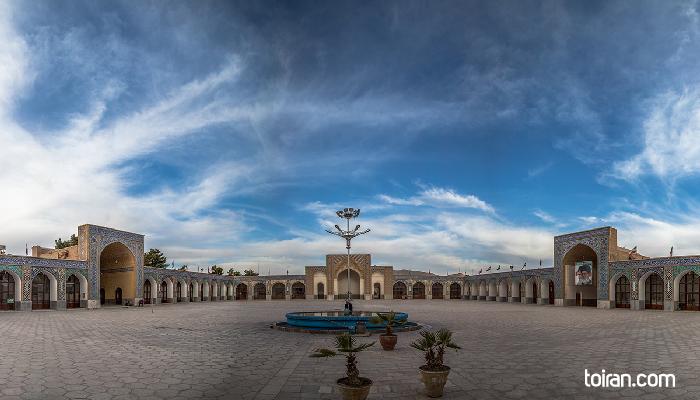Malek Mosque also known as Imam Mosque is a Seljuq era (1038-1118) four-iwan structure in the historical texture of Kerman. Considered the largest mosque in Kerman, this 1,000-year-old structure has several Shabistans (inner sanctum), a large courtyard, a brick dome and magnificent brickwork decorations.
A brick tower on the northeastern side, the large Qibla iwan on the western side and three Mihrabs (prayer niche) with stucco decorations are the only parts remaining from the original Seljuq structure. Qibla iwan (a vaulted hall, walled on three sides and open on one side) is the largest iwan in this mosque and has delicate brickwork decorations with Seljuq era motifs. Due to changes made to the structure over time, one of the Seljuq Mihrabs is now located on the roof of the Imam Hassan Shabistan, the most famous Shabistan of Malek Mosque.
There is a fountain with a depth of four meters in the middle of the courtyard. The mosque once had a Qanat (underground water management system) named Mastoureh after a Seljuq princess which directed water through the mosque. The main entrance of the mosque is currently its northern entrance. The old wooden door of the mosque was built low so that anyone entering would need to bow and enter humbly.
The different parts of this mosque have undergone several renovations throughout the years. The current renovation project of the mosque which began in 1970 is still ongoing. Malek Mosque was registered as a National Heritage Site in 1968.

